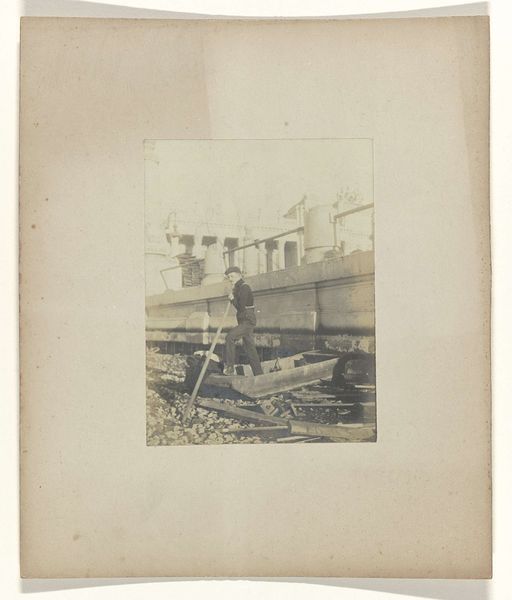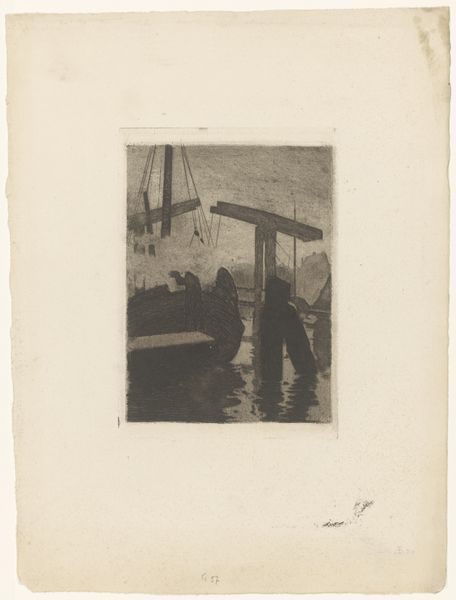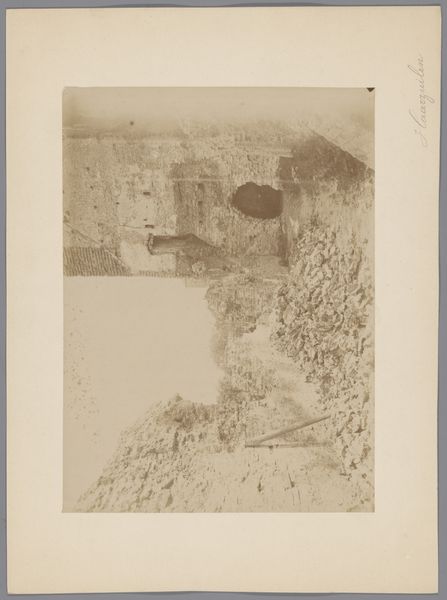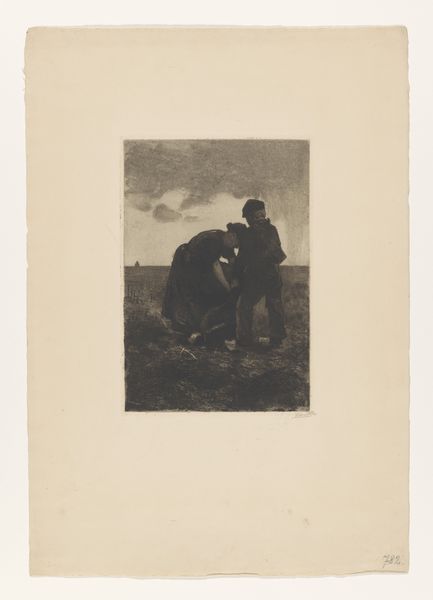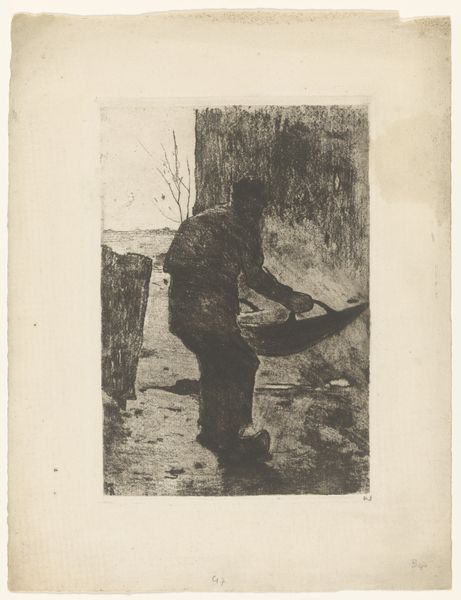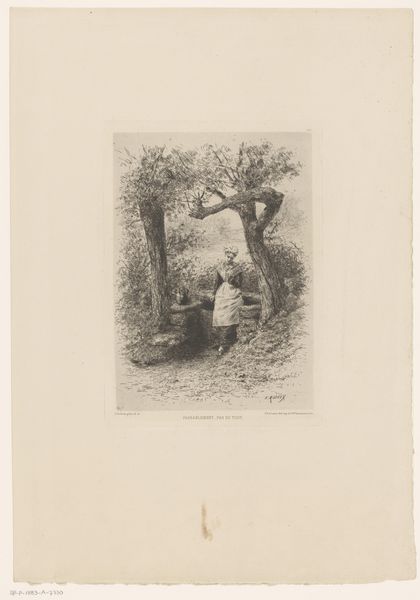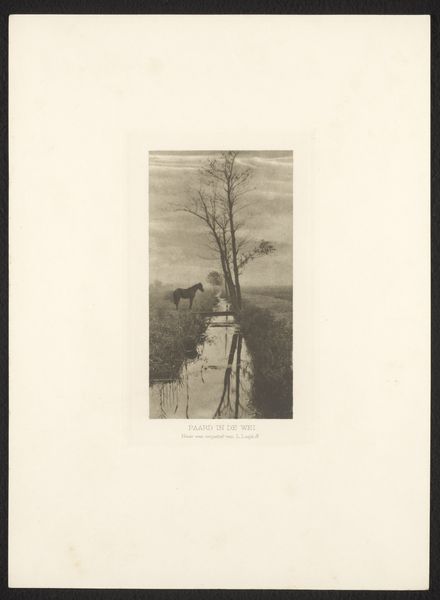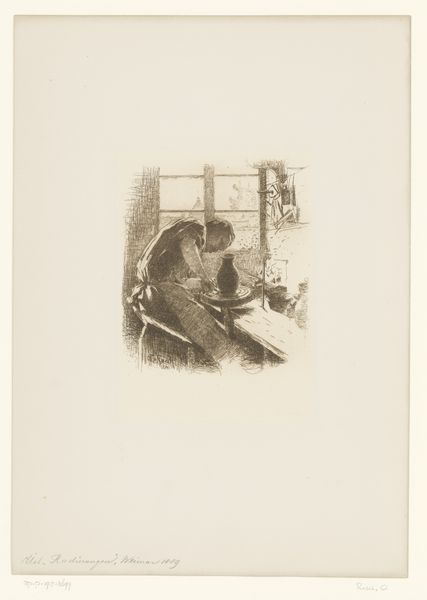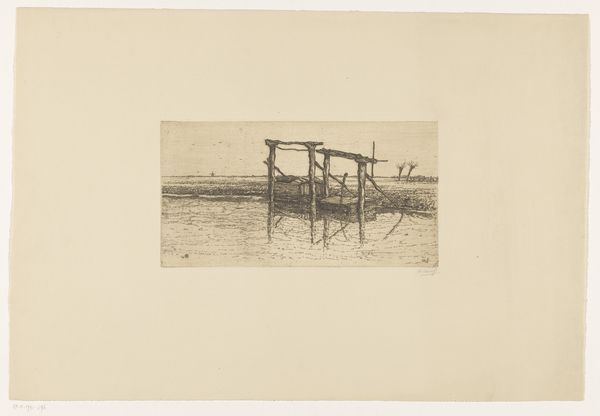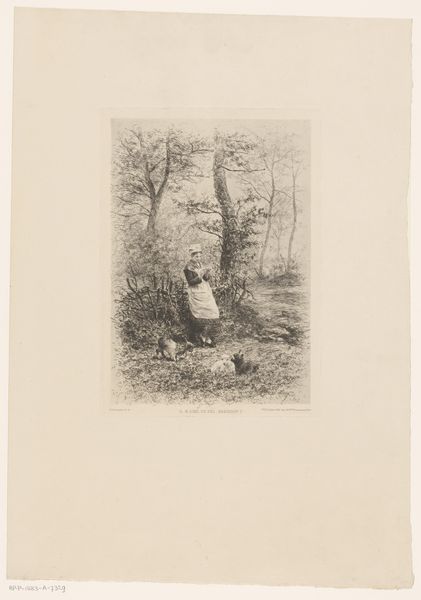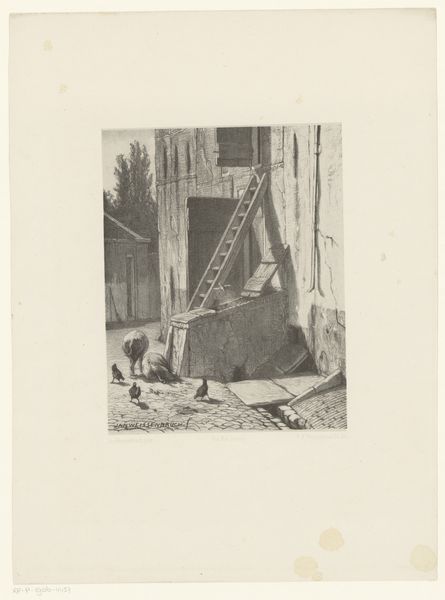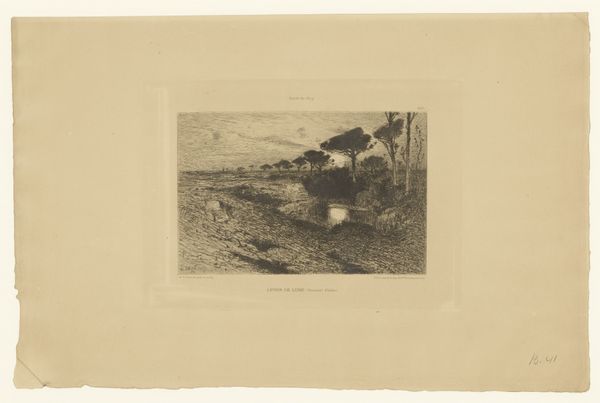
Dimensions: height 361 mm, width 269 mm
Copyright: Rijks Museum: Open Domain
Editor: So, here we have "Woman at the Well," an etching by Frederik Hendrik Weissenbruch, made sometime between 1853 and 1865. It’s quite striking in its realism, especially given the printmaking technique. What catches your eye in this piece? Curator: Well, I find the very materiality of this print fascinating. The artist's deliberate manipulation of the etching process, the lines, the ink, and the paper itself—these elements highlight a connection to the manual labor involved. Note the texture. Editor: The rough texture around the well is definitely a point. It adds a lot to the image and how close it feels to you. Curator: Exactly! The texture of the well itself, the wood and stone, speaks to a very specific kind of labor, drawing water. Furthermore, let’s consider what a well signified during this period. It represented communal resources, essential work, and a woman's role in the household. Can you sense how those notions may contribute context here? Editor: That's true. You don't really think about that labor at first glance. Curator: And notice, the artist isn't simply depicting a pretty landscape. The details he included such as the well as a place where village socialisation can happen while still signifying labour by the villagers and, as a by-product, highlighting the women that frequent them as they gather resources. Do you consider these things being related to his focus? Editor: I see what you mean, Weissenbruch wasn’t just representing labor but making a statement by presenting those realities in romanticised way in his art. Curator: Precisely. By elevating this ordinary task through the printmaking medium, he's making a statement about the value of everyday life and labor. A democratisation through his lens. Editor: That’s a really interesting way to look at it, shifting the focus from just the image to how its production and subject are intertwined with social context. Thanks for sharing your insights. Curator: My pleasure. Looking at art through the lens of production and materiality definitely opens up a new avenue for understanding the artwork's meaning and impact.
Comments
No comments
Be the first to comment and join the conversation on the ultimate creative platform.
